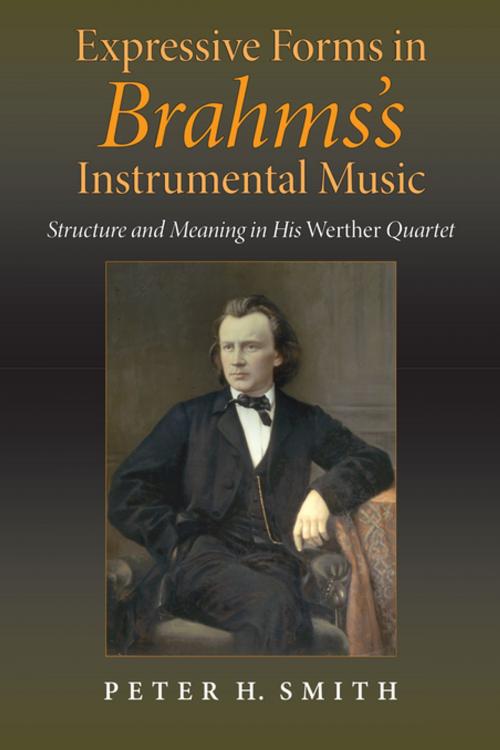Expressive Forms in Brahms's Instrumental Music
Structure and Meaning in His Werther Quartet
Nonfiction, Entertainment, Music, Theory & Criticism, Theory, History & Criticism, Reference| Author: | Peter H. Smith | ISBN: | 9780253023551 |
| Publisher: | Indiana University Press | Publication: | July 7, 2005 |
| Imprint: | Indiana University Press | Language: | English |
| Author: | Peter H. Smith |
| ISBN: | 9780253023551 |
| Publisher: | Indiana University Press |
| Publication: | July 7, 2005 |
| Imprint: | Indiana University Press |
| Language: | English |
This book is a substantial and timely contribution to Brahms studies. Its strategy is to focus on a single critical work, the C-Minor Piano Quartet, analyzing and interpreting it in great detail, but also using it as a stepping-stone to connect it to other central Brahms works in order to reach a new understanding of the composer’s technical language and expressive intent. It is an original and worthy contribution on the music of a major composer." —Patrick McCreless
Expressive Forms in Brahms’s Instrumental Music integrates a wide variety of analytical methods into a broader study of theoretical approaches, using a single work by Brahms as a case study. On the basis of his findings, Smith considers how Brahms’s approach in this piano quartet informs analyses of similar works by Brahms as well as by Beethoven and Mozart.
Musical Meaning and Interpretation—Robert S. Hatten, editor
This book is a substantial and timely contribution to Brahms studies. Its strategy is to focus on a single critical work, the C-Minor Piano Quartet, analyzing and interpreting it in great detail, but also using it as a stepping-stone to connect it to other central Brahms works in order to reach a new understanding of the composer’s technical language and expressive intent. It is an original and worthy contribution on the music of a major composer." —Patrick McCreless
Expressive Forms in Brahms’s Instrumental Music integrates a wide variety of analytical methods into a broader study of theoretical approaches, using a single work by Brahms as a case study. On the basis of his findings, Smith considers how Brahms’s approach in this piano quartet informs analyses of similar works by Brahms as well as by Beethoven and Mozart.
Musical Meaning and Interpretation—Robert S. Hatten, editor















